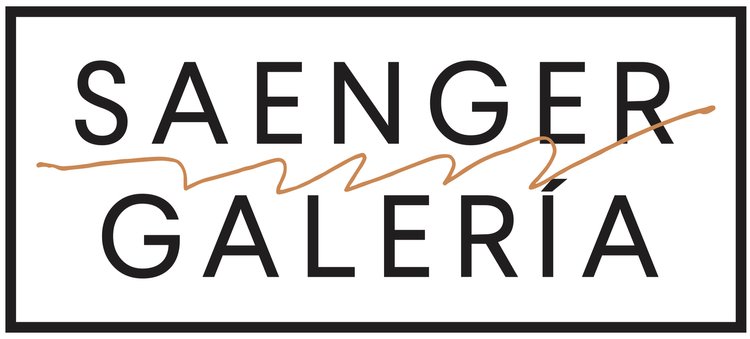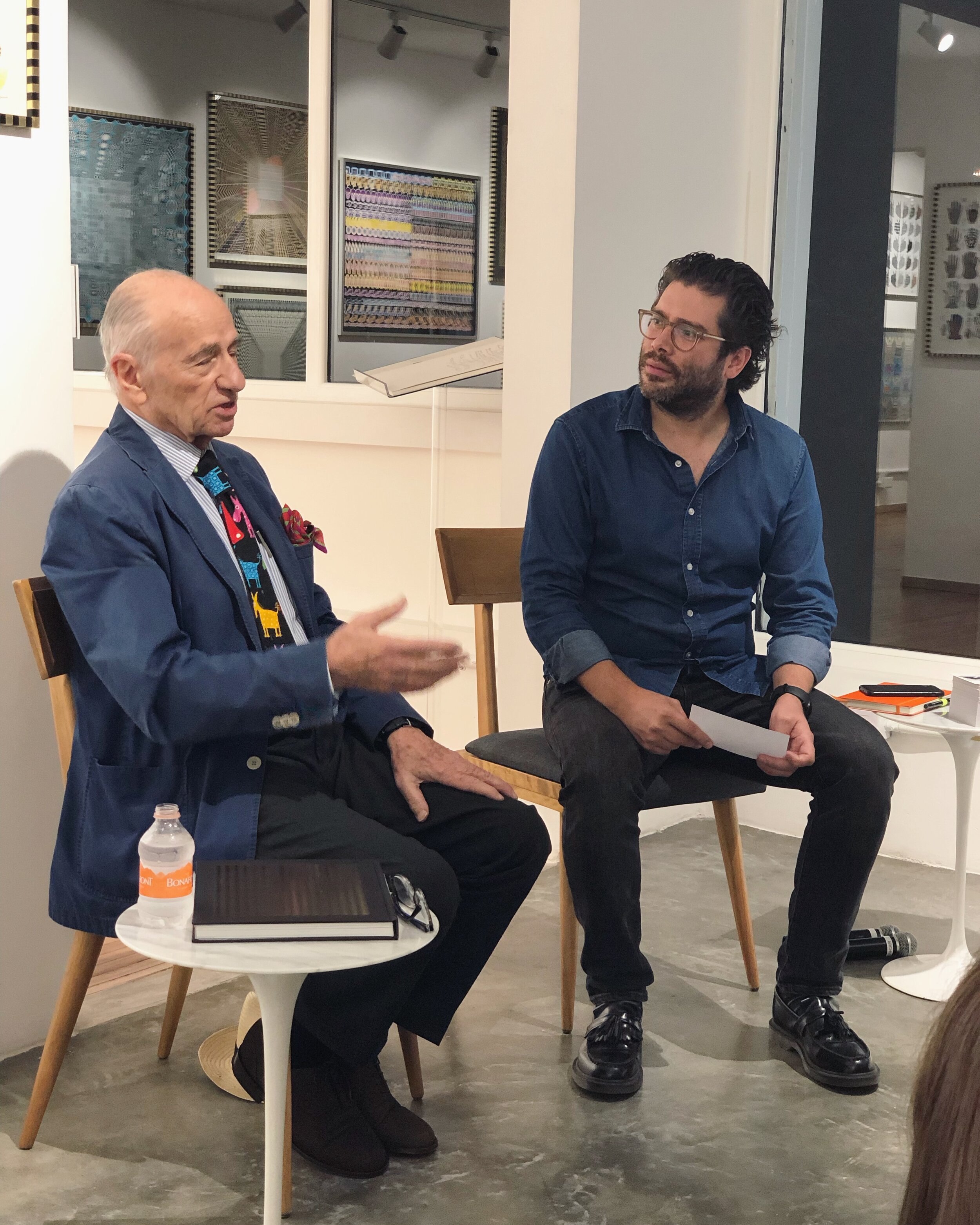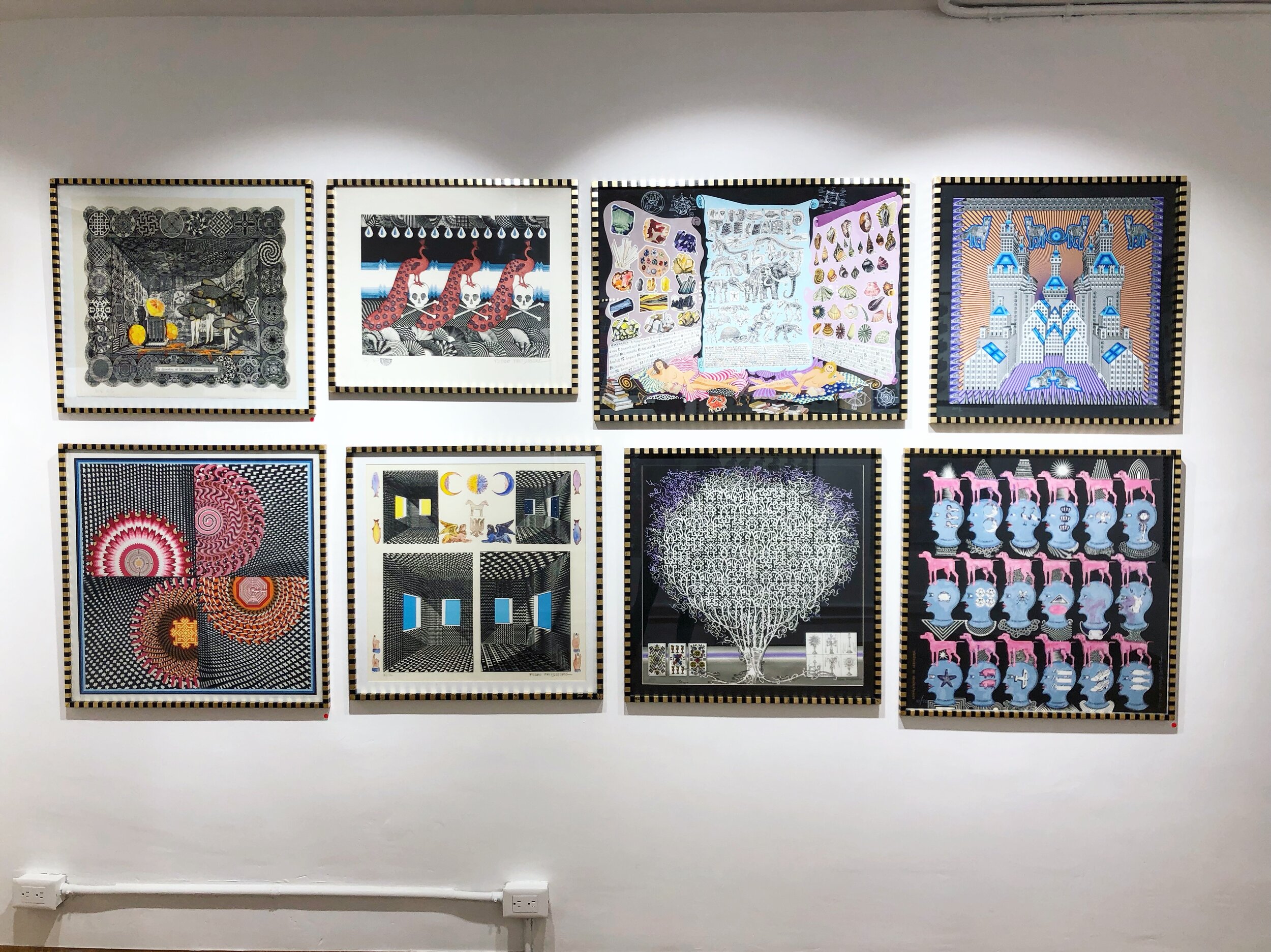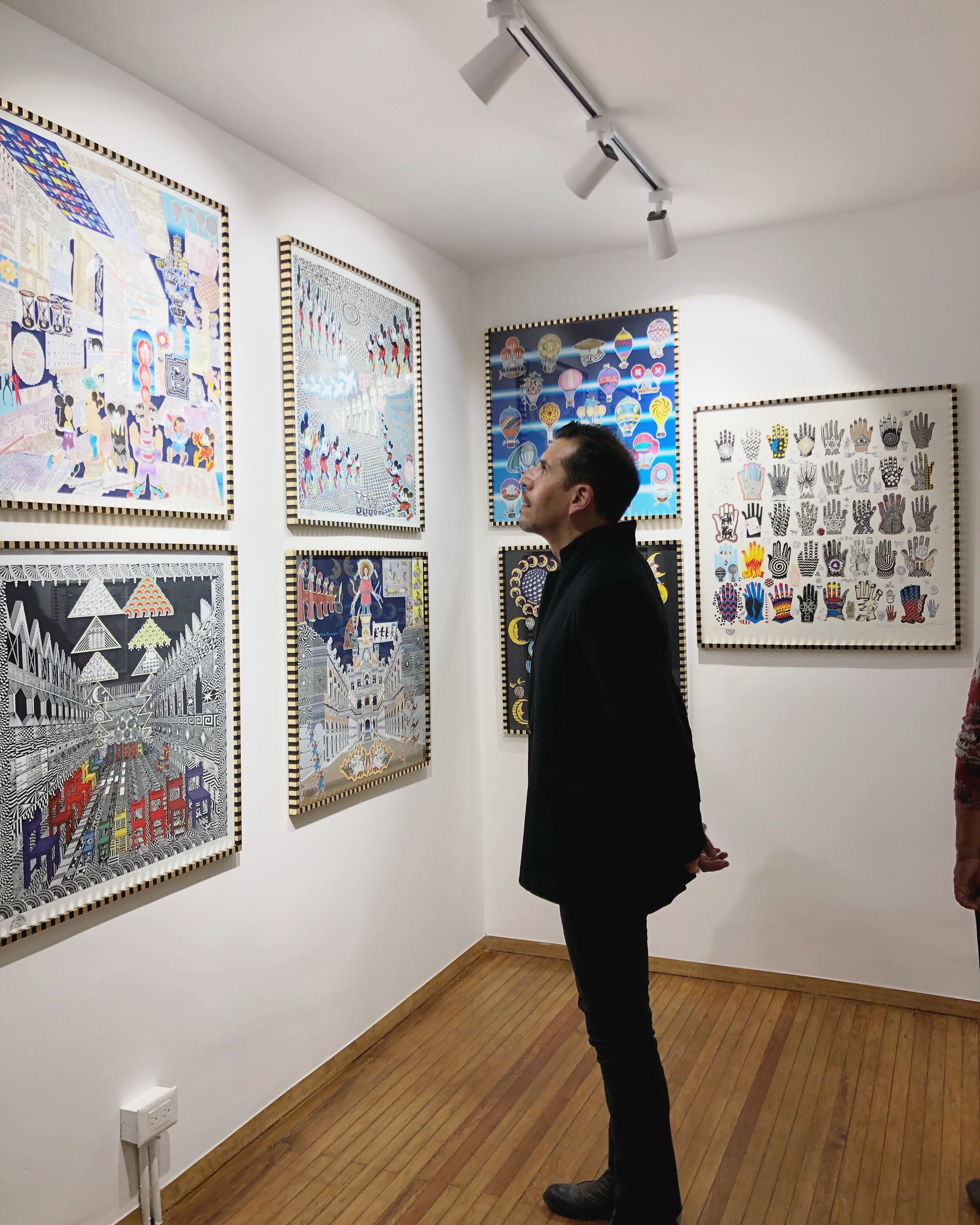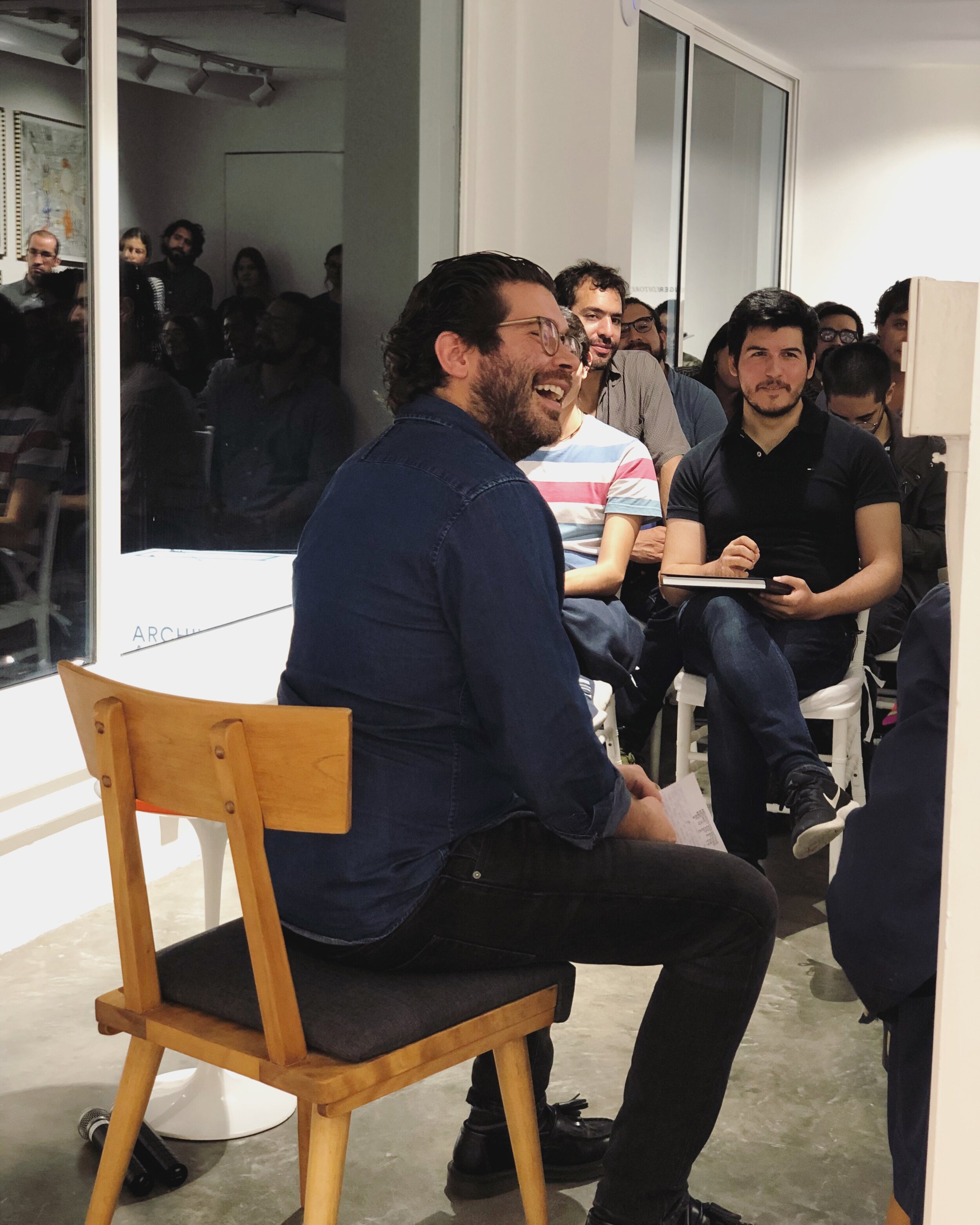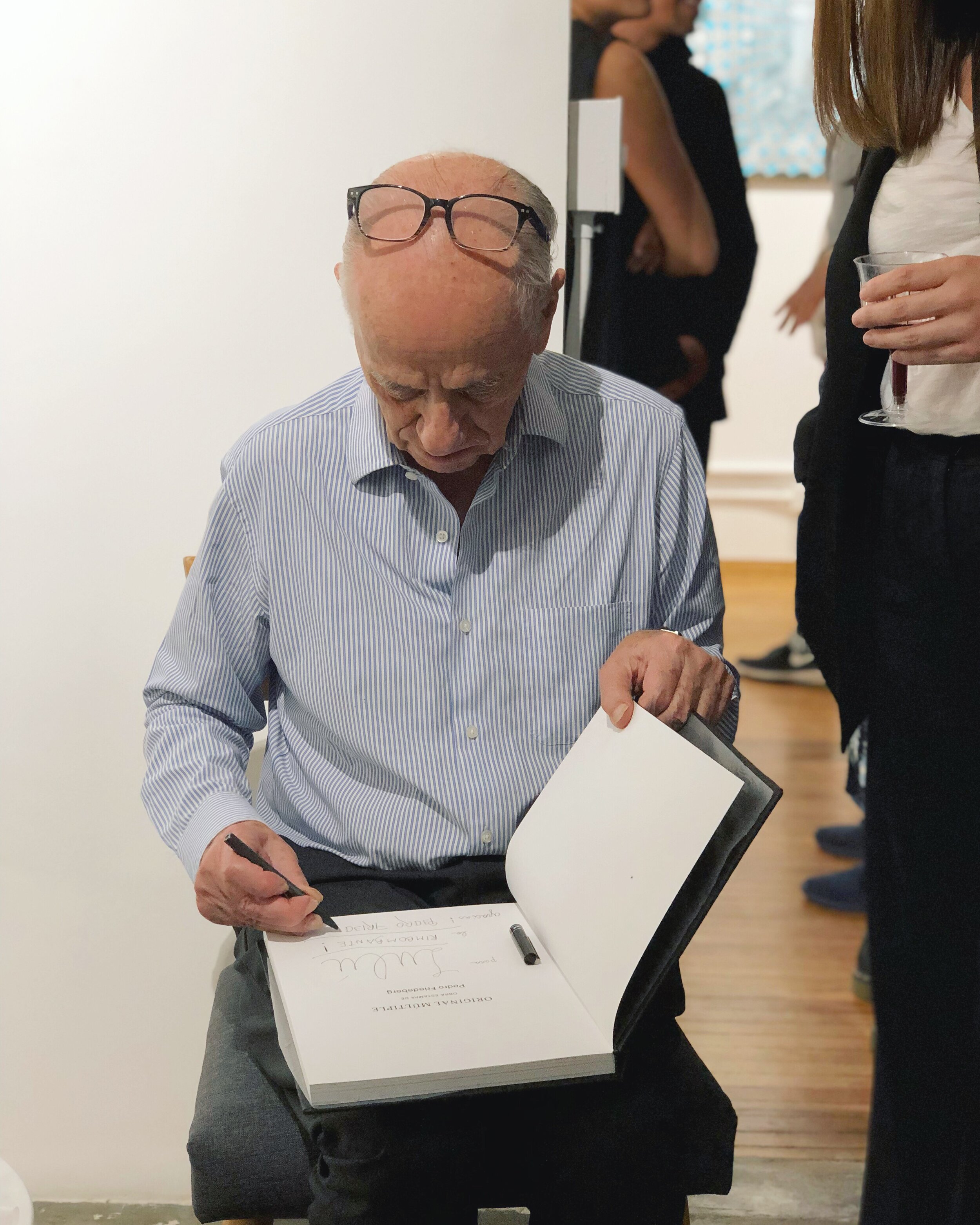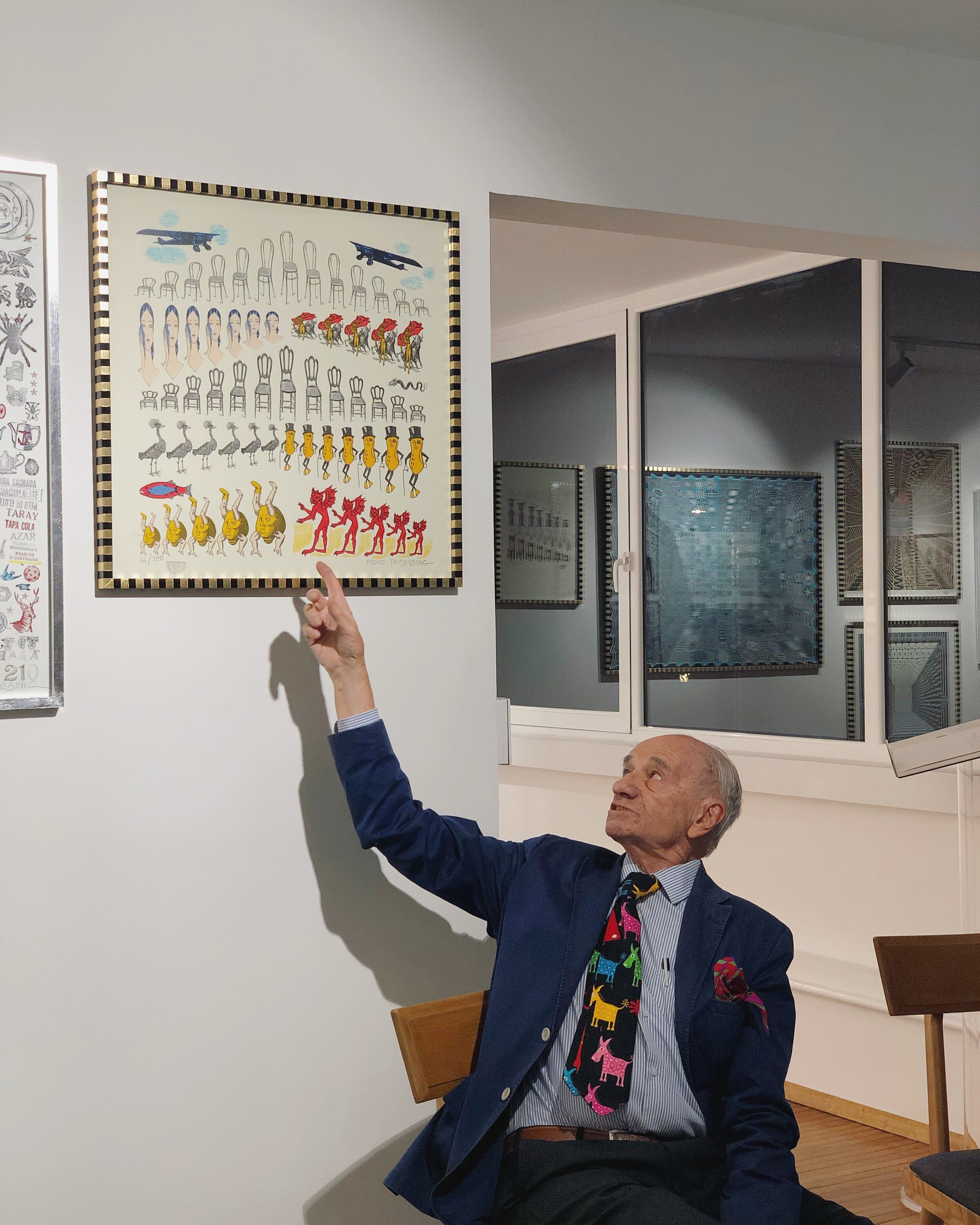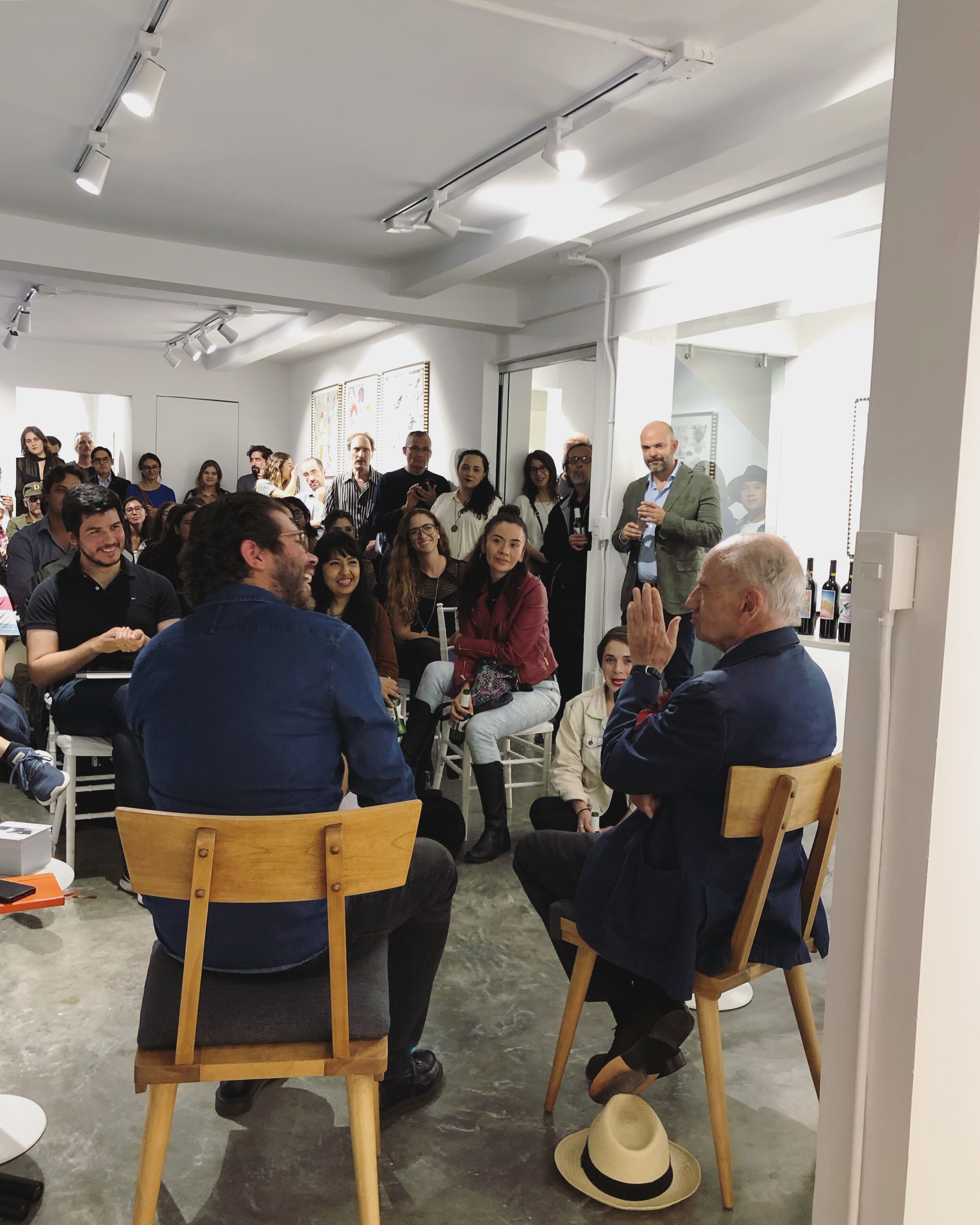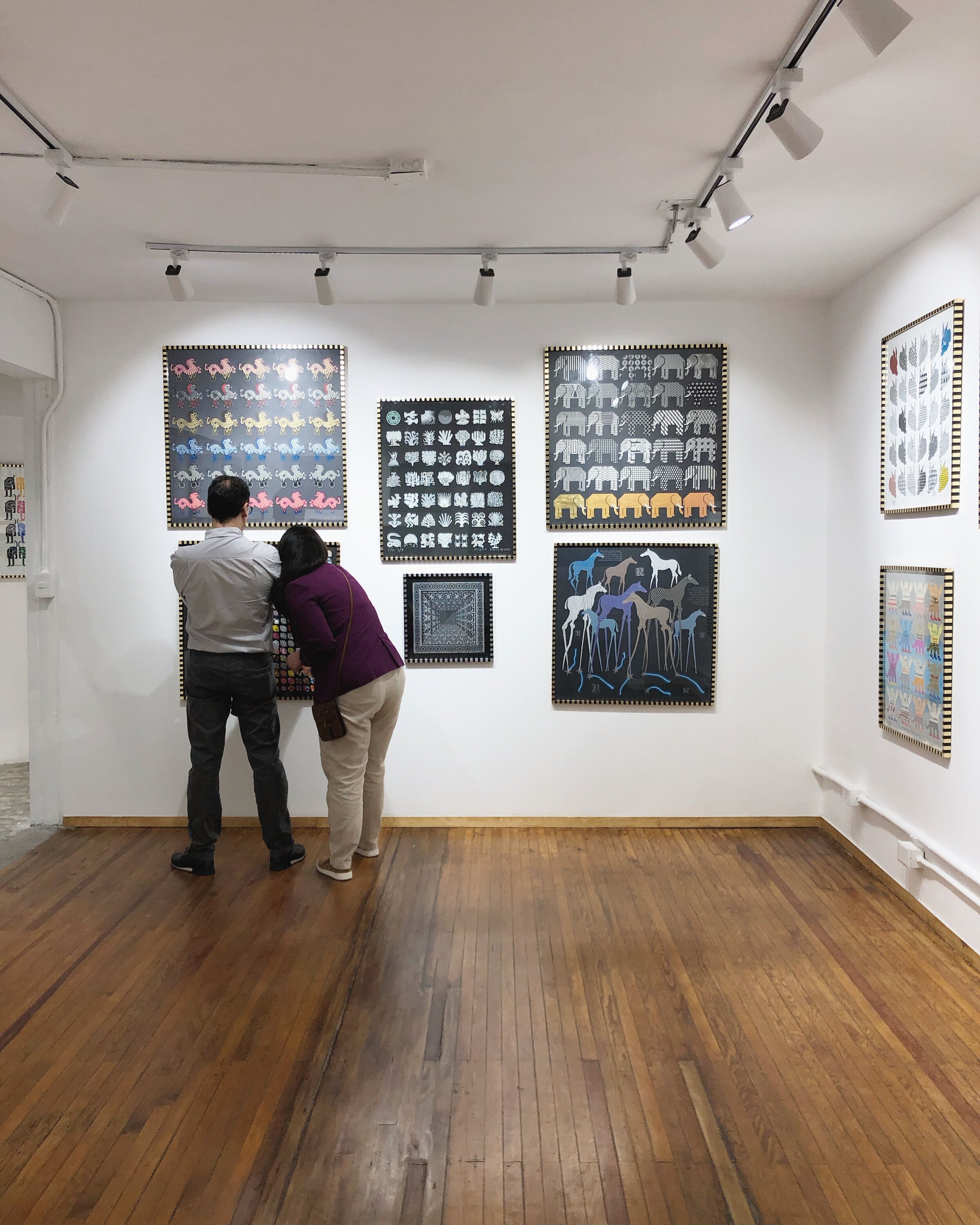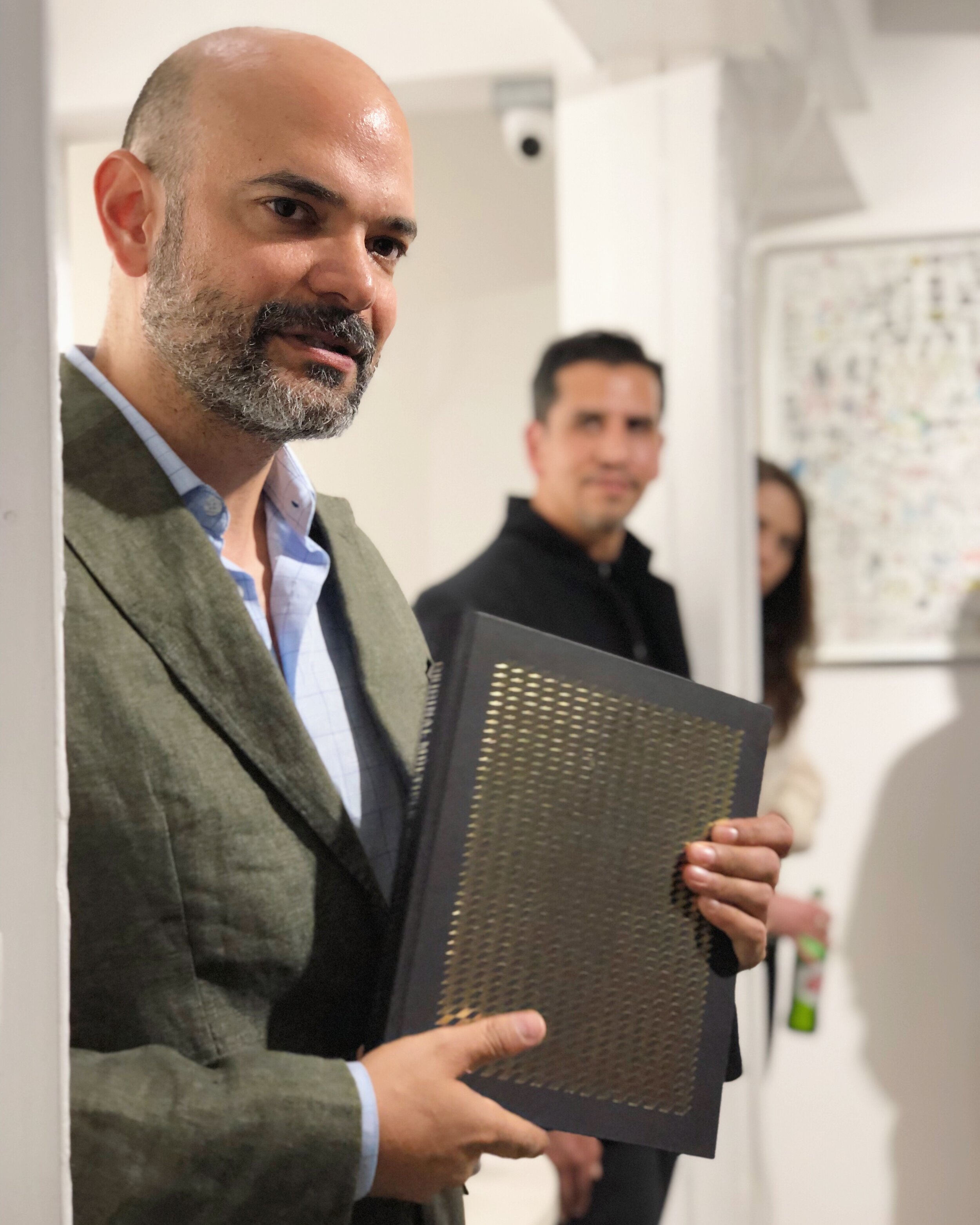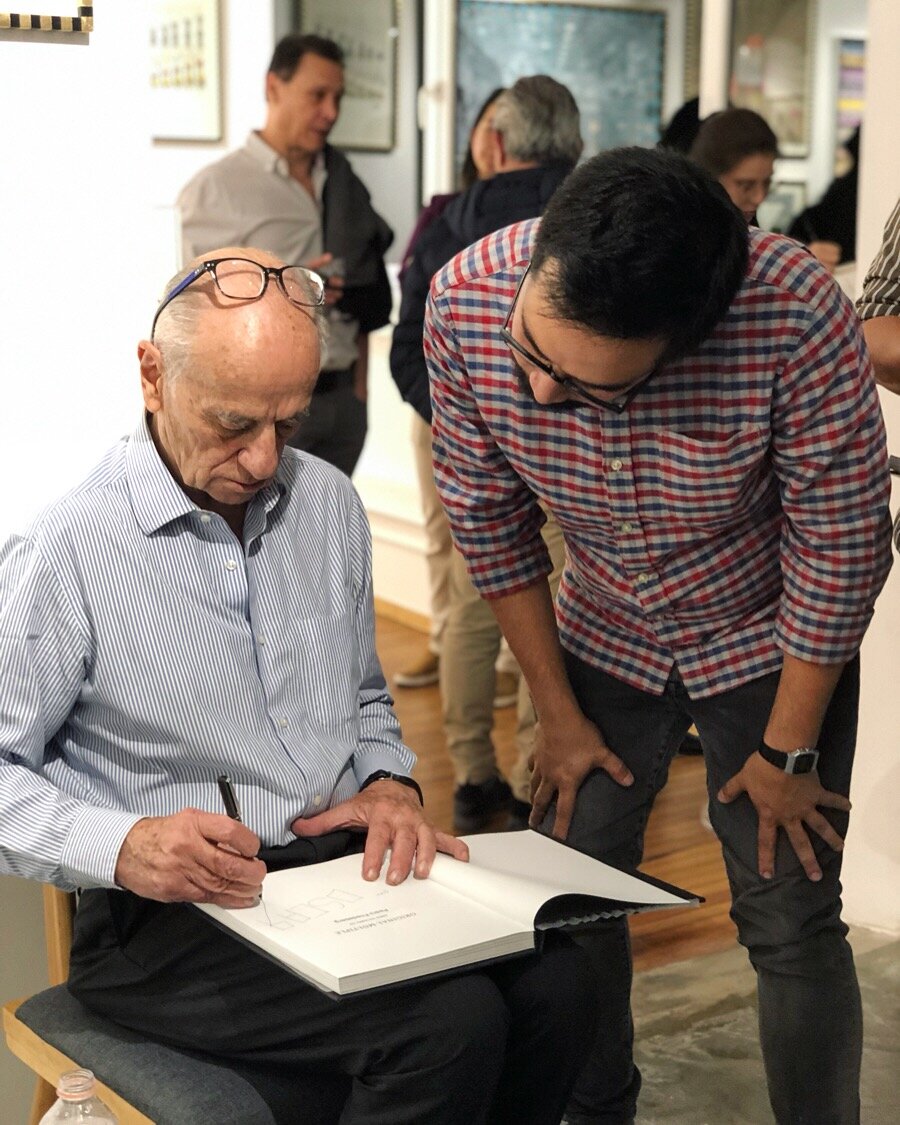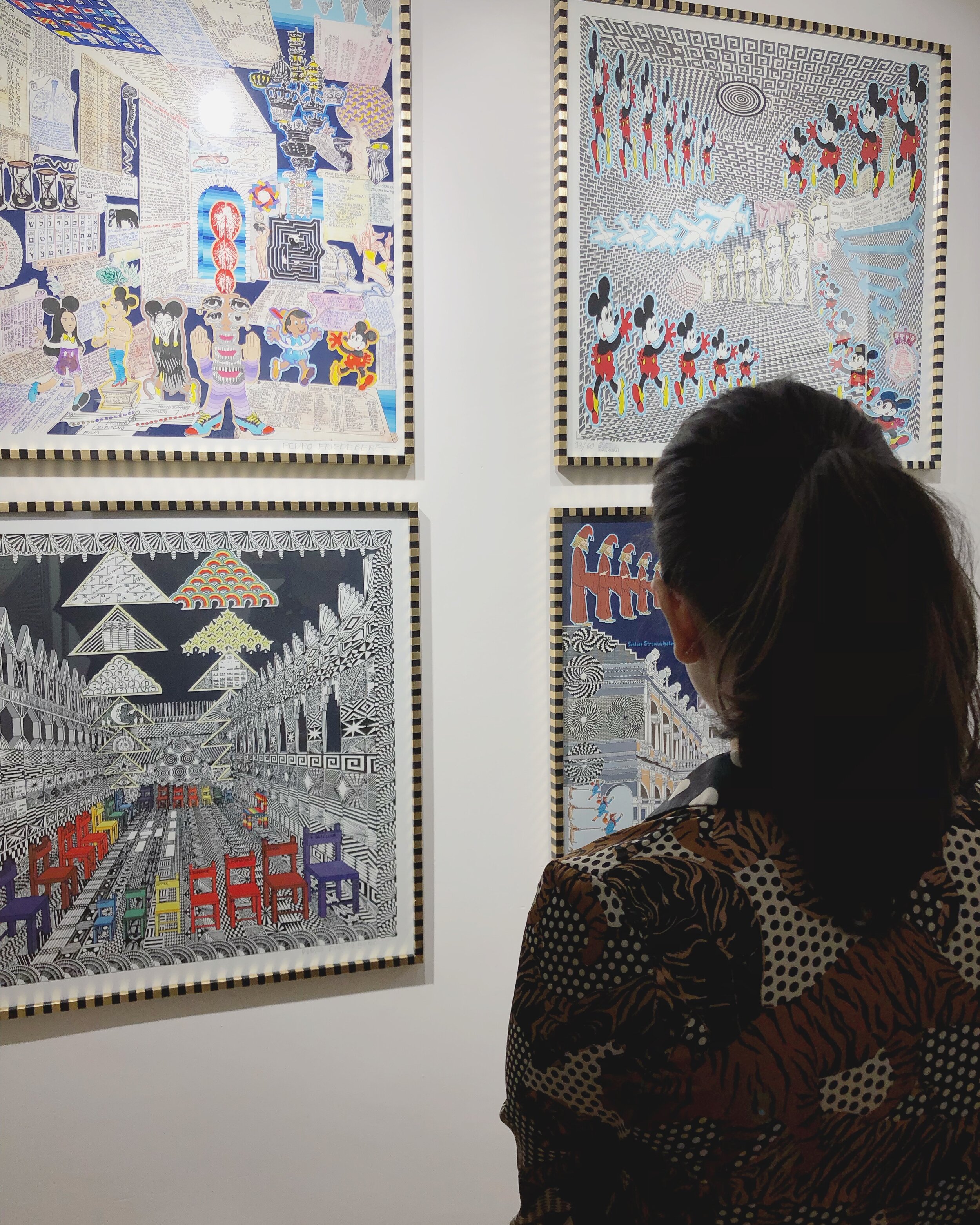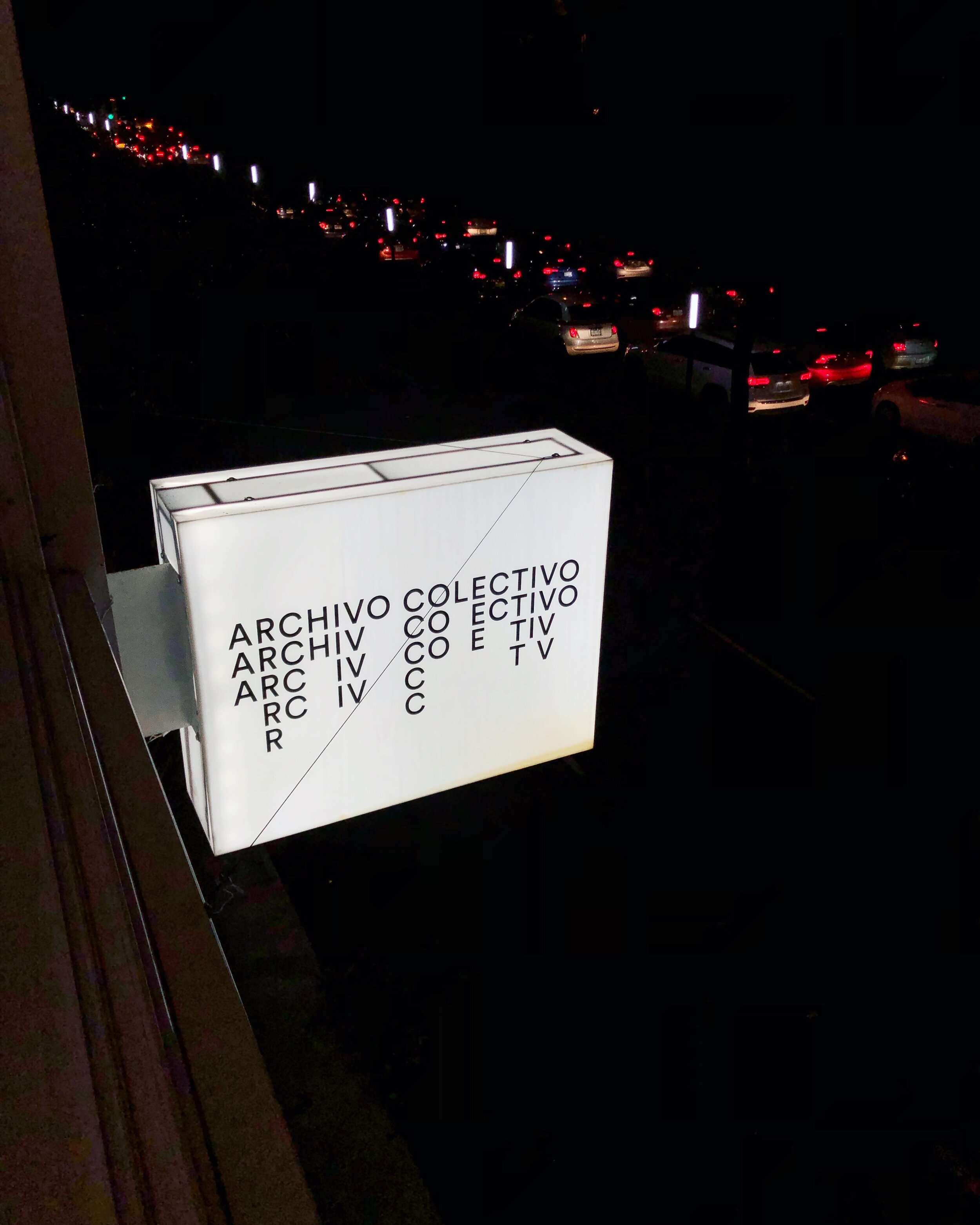ORIGINAL MÚLTIPLE
POR PEDRO FRIEDEBERG
El trazo de la tinta negra sobre el papel en blanco y la perforación del compás para realizar círculos perfectos configuran el momento que más placer provoca a Pedro Friedeberg al instante de su creación artística; un placer que lo ha acompañado desde una etapa muy temprana en su vida. En 1959 inició su carrera en el medio del arte en la Galería Diana en la Ciudad de México y, con celeridad, llegó a presentarse en importantes espacios expositivos en México, Estados Unidos de América y Europa. Durante un poco más de una década, su trabajo se concentró en el dibujo, la pintura y la escultura. En 1970, comienza a realizar obra estampa seriada de edición limitada, técnica que ha utilizado en paralelo hasta la actualidad.
Una de las confusiones más comunes entre los espectadores y amantes del arte es pensar que un original múltiple es la copia de una obra. La obra estampa seriada tiene la característica de estar impresa en ejemplares numerados de la misma imagen y, así, busca habitar de forma ubicua en el espacio de colecciones distintas. Es una obra compartida que puede apreciarse al mismo tiempo en muchos lugares, determinados por la cantidad de ejemplares de la edición. El total de la obra conforma un original que, a su vez, es múltiple y es único en cuanto a su numeración en la serie, un conjunto limitado de ejemplares.
El libro Original Múltiple es el resultado de una investigación ardua realizada en años recientes, un trabajo colaborativo de Bernardo Saenger y quien escribe estas palabras; con el fin de comprender el potencial de su obra estampa y clarificar de manera cronológica la cantidad, materialidad y procesos de creación a lo largo de casi 50 años de producción en distintos talleres de obra gráfica con sede en México. La revisión exhaustiva de la gráfica permite al espectador conocer la prolífica obra de Friedeberg, y comprender la evolución histórica de su poética y estética a través de su obra estampa. En este camino se podrá observar sus arquitecturas irracionales, geometrías sagradas, sistemas conceptuales y collages eruditos, con toques ópticos y pop. El libro clarifica, a manera de catálogo razonado, la cantidad y técnica de cada una de las ediciones realizadas por el artista.
— Alejandro Sordo
The moment that brings the most pleasure to Pedro Friedeberg when creating art is the trace of black ink on white paper and the piercing of a compass when making perfect circles. This pleasure has been part of his life from a very early age. In 1959 he began his career in art in Galería Diana (Mexico City); since then, he has had expositions in important spaces in Mexico, USA, and Europe. His work focused on drawing, painting, and sculpture for some time over a decade. In 1970, he started working on limited-edition serial stamp work, which is the technique he’s been using until now.
One of the most common confusions between viewers and lovers of art is to think that a multiple original is the copy of a work. Serial stamp work has the characteristic of being printed on numbered issues of the same image, and, in that way, it hopes to exist ubiquitously in the space of different collections. It is a shared work that can be appreciated at the same time in different places; it is determined by the number of issues in the edition. The total of the work creates an original that is multiple and, at the same time, is unique due to the limited numbers in the issue.
The book Original Múltiple is the result of a profound research made in the past couple of years. It is a collaborative effort between Bernardo Saenger and me with the purpose of understanding the potential behind Friedeberg’s stamp work, and to chronologically sort out the amount, materiality, and processes of creation that he has used in almost 50 years of production in different graphic ateliers in Mexico. The exhaustive revision of the graphics allows the viewer to know Friedeberg’s prolific career and to understand the historical evolution of his poetic and aesthetic through his stamp work. Through this, one can see his irrational architectures, his sacred geometries, his conceptual systems, and erudite collages, with optical and pop elements. The book clarifies, working as a reasoned catalogue, the amount and technique of each one of the editions made by the artists.
— Alejandro Sordo
